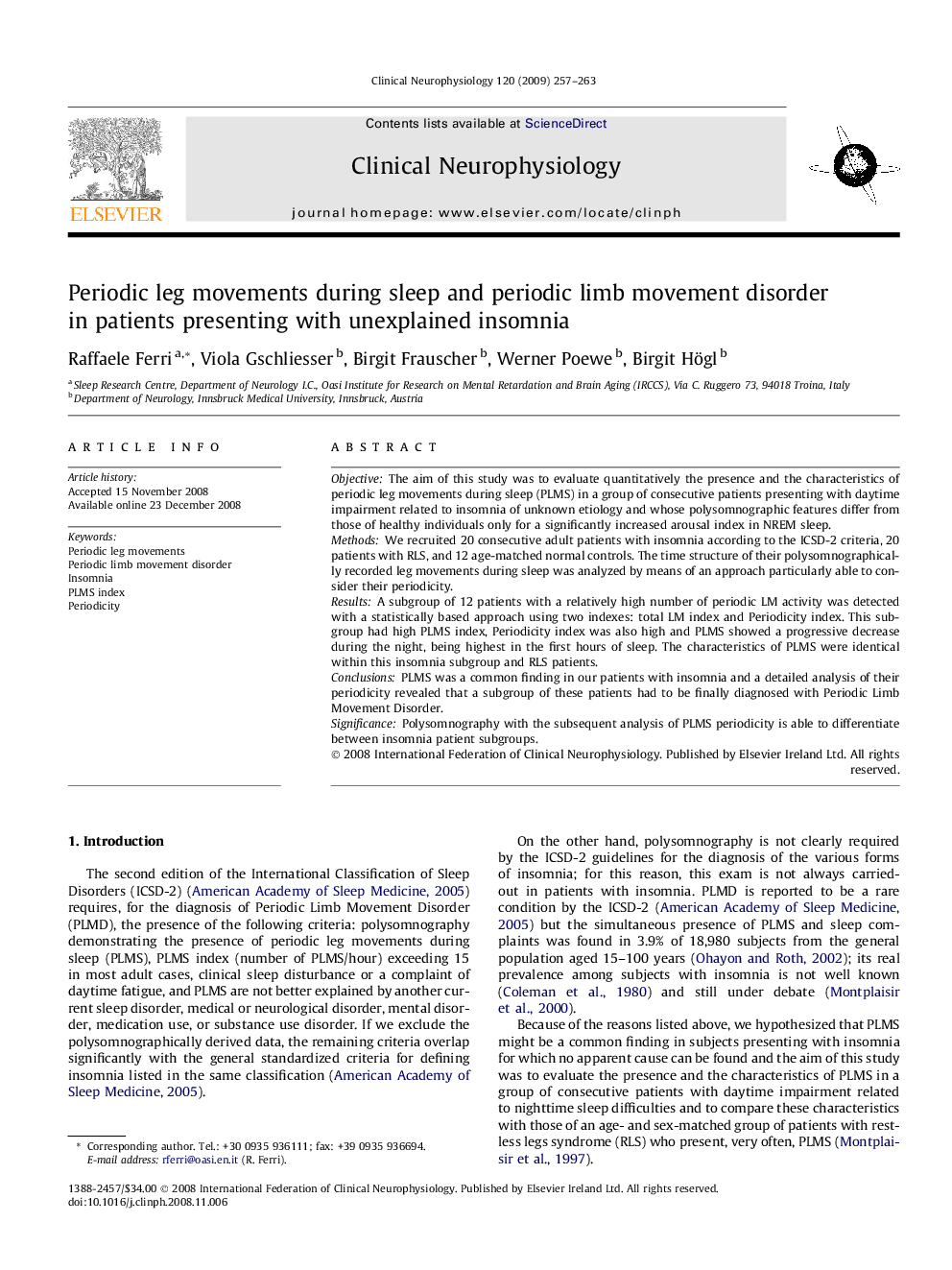| Article ID | Journal | Published Year | Pages | File Type |
|---|---|---|---|---|
| 3047119 | Clinical Neurophysiology | 2009 | 7 Pages |
ObjectiveThe aim of this study was to evaluate quantitatively the presence and the characteristics of periodic leg movements during sleep (PLMS) in a group of consecutive patients presenting with daytime impairment related to insomnia of unknown etiology and whose polysomnographic features differ from those of healthy individuals only for a significantly increased arousal index in NREM sleep.MethodsWe recruited 20 consecutive adult patients with insomnia according to the ICSD-2 criteria, 20 patients with RLS, and 12 age-matched normal controls. The time structure of their polysomnographically recorded leg movements during sleep was analyzed by means of an approach particularly able to consider their periodicity.ResultsA subgroup of 12 patients with a relatively high number of periodic LM activity was detected with a statistically based approach using two indexes: total LM index and Periodicity index. This subgroup had high PLMS index, Periodicity index was also high and PLMS showed a progressive decrease during the night, being highest in the first hours of sleep. The characteristics of PLMS were identical within this insomnia subgroup and RLS patients.ConclusionsPLMS was a common finding in our patients with insomnia and a detailed analysis of their periodicity revealed that a subgroup of these patients had to be finally diagnosed with Periodic Limb Movement Disorder.SignificancePolysomnography with the subsequent analysis of PLMS periodicity is able to differentiate between insomnia patient subgroups.
